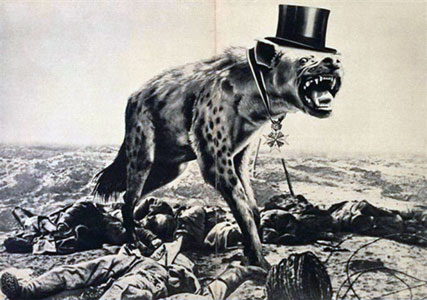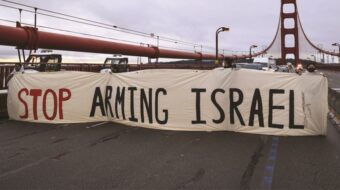
I dreamed I saw St. Augustine
Alive with fiery breath
And I dreamed I was amongst the ones
That put him out to death
Oh, I awoke in anger
So alone and terrified
I put my fingers against the glass
And bowed my head and cried
– Bob Dylan, 1967
The destruction of the Roman Empire took over 300 years ending with the sack of Rome. The slave labor of conquered peoples and other spoils of conquest (used to pay soldiers to fight) defined the empire’s dominant economic model. While social history moved slower in Roman times, and one might argue that conquest was the only realistic path of economic growth then, it proved an unsustainable economic model. It was overthrown in numerous battles. Almost all included the destruction of the symbols and institutions of the ancient regime, including killing as many of the human “symbols” as required to bury the hated Roman autocracy.
The Roman Catholic Church, beginning with St. Augustine, took the place of the empire as the moral and social glue of the society that emerged. The European economic model gradually evolved into feudalism. Feudalism replaced slavery with serfdom as the dominant mode of labor and agricultural production (which was nearly all production).
In this model the serf owned no land, but was entitled to a portion of his work product. The doctrines of rights, obligations and duties of workers were strongly enforced by the moral teachings of the Church. A Great Chain of Being in which all authority flowed from God and the saints, through the Pope and the Church, to the kings and queens and nobility to sit upon the backs of the serfs and tillers of land, served as a relatively stable economic order compared to slavery and war.
Under Roman rule all human powers were vested in emperors and generals and nobility. Under feudal relations clerics intruded upon the elite – the only path toward power not determined at birth. The feudal regime was dominant for a thousand years, more or less, until the gradual growth of science, craft, trade and technology gave rise to non-agricultural forms of wealth and production, which found themselves incompatible with landed aristocratic society.
The bourgeois-capitalist era opened the doors of wealth accumulation to vast numbers of people compared to feudalism. Merchants, craftsmen, and factories in turn crashed against the restraints of feudalism. Revolution in nation after nation cut off the heads of the kings and queens, overthrew their privileges and retainers, and replaced St. Augustine’s Church and the Great Chain of Being with government whose authority was derived from the governed. Like the Romans – with few exceptions – there was no backup for ruling classes of the feudal era, no sidestep, no dodge that could reverse or stop the doom of all the ancient and venerable relations that sustained them. Like the symbols of Rome, it was usually necessary to put the symbols of feudalism and St. Augustine to death to eternally deny them any right to return to power.
Nowhere was this revolutionary paradigm more evident than in the French Revolution. In the American Revolution the institutions of feudalism – the British monarchy – had far shallower roots than they did in France and elsewhere in Europe. Even so, overthrowing the institutions of British feudalism in the American colonies required war, and a completely new constitution and philosophy of government.
So powerful was the moral gulf signaled in this transformation that Benjamin Franklin’s first proposal for disposition of Tory forces “who bore arms against the United States” was trial for treason – a sanction that would have applied to one of his own sons. As it turned out Franklin settled for loss of all property as punishment. For his own son, the consequence of treason was expulsion from America and sacrifice of his son to Franklin.
As with feudal relations, the rising commercial and industrial relations of the capitalist era in America also doomed the chattel slave system in the South. Again, no compromise, no ransom, no “deal” could efface the antagonism between chattel slavery and industrial capitalism based on free labor – free in the sense of “freedom to quit, freedom to fire or layoff, freedom to hire.” And “free labor” proved itself not sustainable without the rise of democracy too. The Confederacy chose rebellion over any compromise. The plantations had to be burned and all their institutions forever abolished, their armies crushed and destroyed at the cost of 600,000 lives, in order to move on.
But, when faced with public and soldier demands to hang Confederate General Robert E. Lee and his officers on trees from Appomattox to Washington, Abraham Lincoln demurred “with malice toward none, and charity to all” to bind together a nation’s wounds.
That the rise of democracy is inseparable from the rising productivity, literacy and value of human capital – the talents and labor-power of working people – should be obvious. Not just birth, property and religious devotions, but simple citizenship, now admits tens of thousands more human beings to full suffrage. But it is not so obvious. Capitalism releases previously unimaginable productive forces. But it also corrupts the very democracy that gave it birth, with inequalities of wealth and power so vast as to compel rapid and frequent conflicts that tear whole societies and nations apart.
The first and second World Wars, and their 75 million dead, testify to the violence with which democracy, especially the spread of the rights embodied in the ideals of the French, American and Russian revolutions to all who labor, is met by the newly entrenched wealthy and powerful interests of corporations and their owners.
The victory of democratic forces in World War II propelled the democratic wave to new heights – against apartheid, segregation, colonial subjugation and imperial domination. Nonviolent resistance to oppression did not originate with Mahatma Gandhi in the Indian struggle for independence, nor with Dr. Martin Luther King in the U.S. civil rights movement, but before them the path of revolution and head-hacking of ruling powers was virtually the ONLY path that could prevail.
The great economic crash that began in 2008 shows all the signs of a deep structural crisis not unlike those that have sorely tested fundamental class, economic and political institutions in the past. Wealth inequality is skyrocketing; existing democratic institutions are showing great difficulty maintaining stability.
Reaction, the wealthy and many large corporations are mobilizing forces to nullify and corrupt democracy at every level. U.S. society is becoming a house divided against itself. Efforts to find common ground are spurned, demonized and assaulted. Keynesian solutions to the economic crisis – increased public spending on jobs and income to increase demand – are vilified and drowned in racist, nativist, religious and all manner of fascist-like diversions. Voter, women’s and union rights and protections are flagrantly attacked. Violence is encouraged against immigrants, liberals, socialists, the poor, the homeless, Muslims, etc. Civility is abandoned. Science is disdained. Art and culture, especially internationalist and progressive culture, are banned from schools. Degrees of madness and fascist thinking infect nearly every “advanced nation” now.
Will “the blood-dimmed tide” once again be loosed?
“Darkness cannot drive out darkness, only light can do that. Hate cannot drive out hate, only love can do that.” Dr. King’s legacy and teachings are now inscribed on the moving and historic monument to his lifelong struggle for equality, on the Mall in Washington; in sight of the place he made his famous “I have a dream” speech in 1963. He believed, not unlike the father of modern socialism – Karl Marx – in a society where we expect from each according to their ability, where we invest in those abilities as our most precious resource, and render to each according to their work. He believed that in a world where weapons can destroy tens of millions upon millions, a peaceful path to progress can and must be found; that mass civil disobedience embodies immense economic, political and moral power; that we must do all in our might to avert the 20th century price paid by the World War II Depression generation.
Must today’s St. Augustines be put to death? Can anything persuade them to retire? We will now test again whether this nation, or any nation so conceived and so dedicated to human freedom and democracy, can long survive without the scourge of war and violence.
Image: Spoils of war, 1932 photomontage by the German anti-fascist artist John Heartfield. His art was intended to warn the world of the rise of Hitler and Nazism. This appeared as an illustration for the Arbeiter Illustrierte Zeitung, the German Communist Party newspaper.












Comments